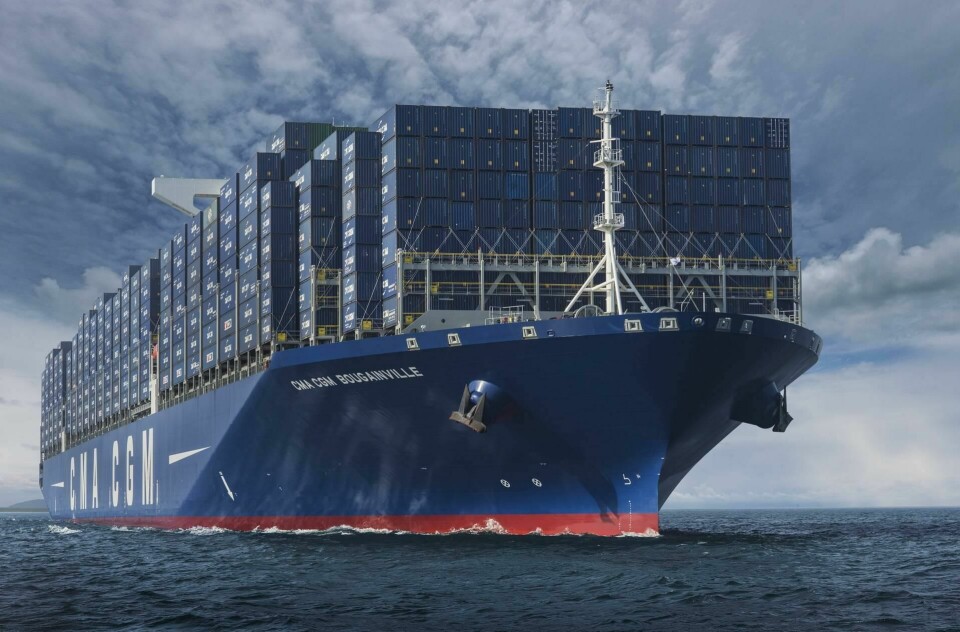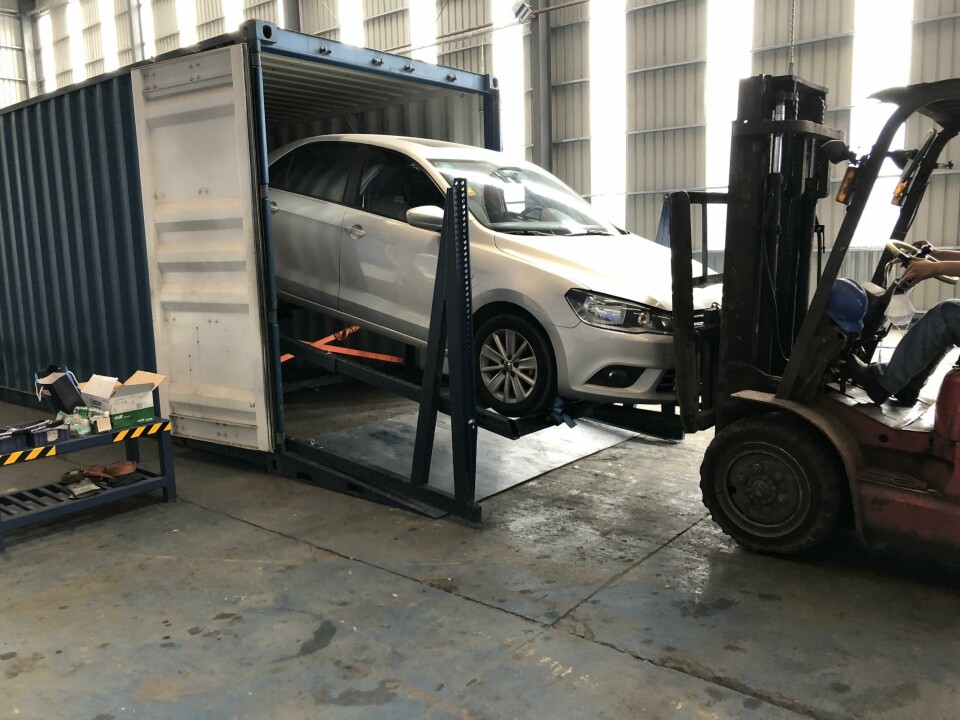Containing the boom after the bust
Since it took over Gefco, Ceva Logistics has developed a fifth business division dedicated to finished vehicle logistics and it is now seeing an increase in global demand for containerised vehicle services, writes Marcus Williams

In January this year, Ceva Logistics completed the integration of Gefco’s finished vehicle logistics business and set up its own division under the direction of the French logistics provider’s former chief operating officer Emmanuel Cheremetinski.
Gefco’s inbound services, mostly involving contract logistics and ground transport, is currently being integrated into Ceva’s other existing operations. The process is due for completion in 2023 and once that is tied up it will mark the end of the Gefco brand worldwide.
Ceva’s ambitions in maximising the potential of the Gefco buyout are clear in its creation of a newly formed fifth division focused on vehicle logistics.
Ceva already provided finished vehicle logistics services in south-east Asia and Australia. With Gefco’s strong standing in Europe now under its belt – a region that now accounts for 50% of Ceva’s topline – the logistics provider is planning further developments in North and South America, and is already in discussions with OEMs in those regions.

“This fifth product line we are putting into the Ceva portfolio puts us in a unique space,” says its CEO, Mathieu Friedberg. “We will be the only large 3PL out there that truly offers the service offering at that scale, from inbound logistics to the whole finished vehicle logistics offering.”
Along with the newly formed Finished Vehicle Logistics product line, Ceva also offers Contract Logistics, Air, Ocean and Ground (including road and rail).
Combined strength
According to Xavier De Conigliano, global business development leader for finished vehicle logistics at Ceva, the scope of development in that part of the business is impressive. That is thanks to the combined strength of Ceva’s global presence, as part of container shipping line CMA CGM, and Gefco’s well-established provision of finished vehicle logistics in Europe.
“In addition, Ceva has quite a lot of automotive exposure and there are a lot of things we can do in terms of new geographies, new offers and new businesses,” says De Conigliano.
One area of the finished vehicle logistics business that is currently taking off is the global movement of finished vehicles in containers, something Ceva is already able to offer OEM customers, supported by its parent company.
“We were already doing this before, but in October last year we saw the number of requests was really booming,” says De Conigliano. “That is when we decided to get a proper, dedicated organisation for the product. So now we have a product leader, dealing with only cars in containers.”
Ro-ro capacity crunch
The pickup in demand for container services by carmakers is a reaction to the sudden shortage in ro-ro capacity over the last two quarters of 2022. While assembly plants have been gradually building up volume post-Covid, the vessels that ro-ro operators scrapped or laid up during the pandemic have not been replaced. Finished vehicle logistics providers are placing new orders for vessels again but market uncertainty and the levels of investment required made them wary for a critical period.
Vehicle exports from China are also putting demands on ro-ro capacity. According to the latest data from market analyst Vessels Value, Chinese finished vehicle exports topped 3m units last year, a 54% growth year-on-year.
“We noticed that there was an increase in the need to move cars in containers and several factors brought that about: lack of ro-ro [capacity] and an increase in rates for ro-ro; and a decrease in the rates for container freight,” says De Conigliano.
The container shipping industry had a tough three years after the coronavirus hit. In the midst of the pandemic, rates for 40-foot equivalent units (FEUs) soared to more than $20,000 on China-US lanes. Many saw that situation taking until the end of 2023 to settle down.

However, the container shipping sector saw a better-than-expected recovery toward the end of last year and rates have dropped. According to Vessels Value, spot container rates between Shanghai and north-west Europe have softened further in January following the Chinese New Year, averaging $1,700 all in per high cube FEU, excluding handling.
“This proves an attractive solution for OEMs unable to secure additional ro-ro capacity on PCTCs in chronic short supply,” says Dan Nash, head of Ferry, VC and RoRo at Vessels Value.
Gefco had been offering containerisation service for finished vehicles for some years prior to the takeover. Ceva now continues a contract with Trans-Rak for the supply of the cartridge system required to load the vehicles into the container. Those are mainly in China, originally positioned for shipments to the Middle East and back.
Global network
While the method of delivery is never going to rival to ro-ro for large volume handling, not least because of security rules on EV shipments, there are clear signs that volumes will stay higher than they were prior to the pandemic.
“It is difficult to predict but our guess is that for the next year or two there will be a market and we want to grab it,” says De Conigliano. “And beyond that there will still be opportunities that were previously handled by small local players. We can offer some solutions to specific destinations and specific volumes.”
In response to current demand and looking ahead, Ceva Logistics, as part of CMA CGM, is building a network of linked ports, currently numbering 42. At those ports of origin and destination Ceva has subcontracted facilities and put services in place to stuff and unstuff the containers, a complex process that requires skilled labour to ensure vehicle quality is maintained.
De Conigliano says that Ceva is seeing demand for these services increase globally. Not only is there greater interest in China to Europe for vehicle moves, there is also demand from Latin America, the Middle East and Africa. Ceva is also targeting the US.
“The Asian carmakers are launching big tenders because they have massive volumes to export from China to Europe,” he says. “Before it was quotations for hundreds of cars but now we have tenders for 30,000-50,000 cars to be transported.”
Ceva already has a strong offering in China to meet that demand through its well-established joint venture with SAIC’s logistics subsidiary Anji Logistics – Anji Ceva – a $1.4 billion business that does 70% of its business within the automotive space. That includes providing services for the containerisation of vehicles for export from China.
“We have easy access to containers… we have the Chinese presence and set up, and we are pushing these solutions to our customers,” says Friedberg. “We have already be doing quite a bit of this in the Middle East as well.”

Inland services
Ceva is also looking at inland containerised shipments, with vehicles containerised at the point of pick up at the factory and delivered beyond the destination port.
“We have the capacity to deliver the vehicle to the dealer, to the fleet owner or even to the final user,” says De Conigliano. “If you order a car on the internet from a Chinese carmaker this is something we can do. We pick the vehicle up from a factory and take it to a port to put on a ship, and then at destination deliver it to where it needs to go.”
That builds on the (non-containerised) services that Gefco offered for vehicle deliveries from factory to final destination. Its Moveecar service, for instance, offered tracked single car deliveries, and included inspection and repair services. De Conigliano says this was a growing market for Ceva and one it will be addressing more in the coming years.
Friedberg confirms that Ceva is responding to trends in online and personalised services, continuing Gefco’s legacy. “We will pursue the new avenues that Gefco opened, including with new online players and in the way we position ourselves with the new energy vehicle players in China (and with Tesla) – all that comes with a different set up than what the historic OEMs were doing,” he says.
Keeping tabs on the status of those deliveries is also a part of the service that is in high demand. Ceva is able to track the VIN throughout the delivery process and likewise the container number and provide live updates to the customer.
“What we are currently developing is the ability to track the vehicle from the factory to the final destination,” says De Conigliano.
In support of that, in January this year Ceva announced a partnership with project44, the supply chain visibility provider. Together the companies are working on improvements to ocean freight tracking. Ceva says it will be able to provide greater accuracy and timeliness in monitoring ocean shipments with an Automatic Identification System (AIS). That system will provide shipment location at sea, as well as shipment notifications and analytics, including for other carrier milestones, transfers and dwell times. The information will be made available to customers through the MyCeva online portal. The AIS will also issue exception alerts and management. This enhanced visibility and analytics aims to enable better decision-making and collaboration.
“Data is like gold in the shipping industry, and project44 will help us mine the value from the data, all for the benefit of our customers,” says Stephane Gautrais, global head of ocean freight at Ceva.





